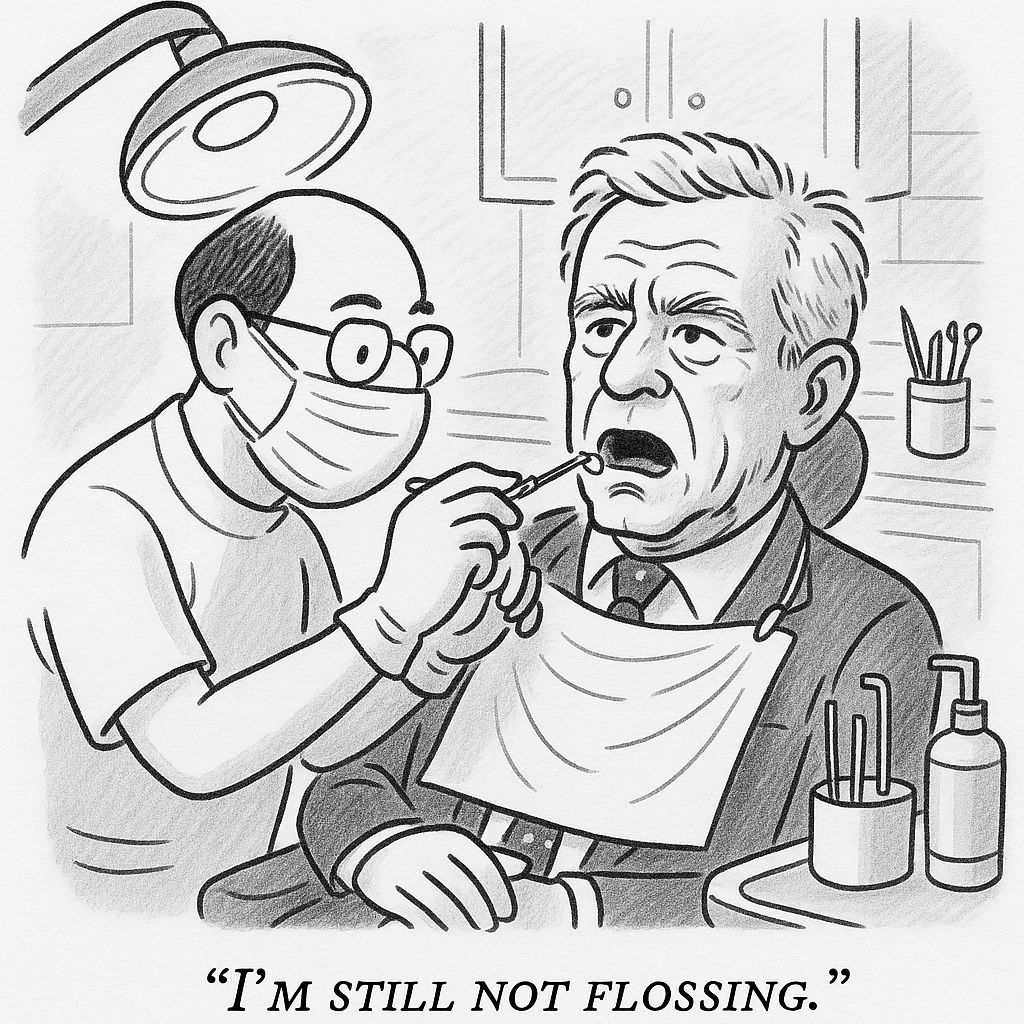TLDR:
$54B preventative oral health market (inside of a 300b+ oral care market) but it receives <1% of VC funding in 2024
Massive gaps in access, coverage, and prevention, and there’s a market map included to guide investors toward high-upside bets
Private-equity driven practice consolidation enable software sales at scale—new GTM paths emerging
Undercapitalized areas:
Practice management (no dominant EHR)
Patient financing & navigation
Preventive tools & diagnostics
When I was growing up, one of the ways I got diagnosed with chronic sinusitis - and ultimately on a path to get surgery - was at the dentist. My provider saw that I was doing a lot of mouth breathing while sleeping, so referred me immediately to an ears, nose and throat specialist for a follow-up consultation. I didn’t recognize it then, but this was my first foray into the broader arena of “oral health” versus dentistry. I’d associated visits to the dental office with screenings, cleanings, and the odd filling or cavity. Check the gums and teeth, take home the floss and a toothbrush, rinse and repeat. As it turns out, the dentist office can be so much more than that, particularly as fewer Americans than ever have a longitudinal relationship with a family physician and instead treat the emergency room as their first stop for healthcare.
What Your Mouth Says About Your Health
The mouth may not be a window into the soul, but it does provide a lot of information about a patient’s current and future health, and even their socioeconomic circumstances. Whether it’s the teeth, the gums, or even the jaw, researchers have found strong links to all sorts of health conditions ranging from neurological disease, diabetes, heart disease, and even pregnancy. There’s also disparities in oral health outcomes amongst kids and adults that are fully addressable and preventable. These inequities are getting worse every year. A CDC study found that from 2016 to 2021, there was a 10% decrease in low-income children and adolescents opting in for routine dental visits. In rural areas, studies are finding that between 30 and 40% of people aren’t getting routine dental care. During Covid, many people opted against dental work and check-ups. That could serve to increase these disparities in the next decade, particularly as we face a potential future where even fewer people in America have access to dental coverage.
Avoidance is costly
For millions of people, dental care involves some level of out-of-pocket expense - so many avoid it for as long as possible. A recent report found that about 72 million people don’t have dental insurance, and that number is set to increase. One result is that patients don’t seek preventative care, leading to trips to the hospital when acute dental conditions arise. “In 2021 alone, Americans made more than 2 million costly visits to the emergency room for dental-related issues, most of which could have been prevented with timely, routine care,” Melissa Burroughs, senior director of public policy at CareQuest Institute for Oral Health told me. That’s adding enormous costs to an already burdened healthcare system.
We’re not headed in the right direction. Burroughs is extremely concerned about possible cuts to adult dental coverage from Medicaid, which she fears could result in $1.9 billion in added healthcare costs as more people choose expensive hospital visits over inexpensive preventative care. This is also a drain on productivity, given how many days off of work are required for dental emergencies, and it can be incredibly painful and traumatic for patients. An astonishing 50 to 80% of U.S. adults have reported some form of dental anxiety, per a 2020 study in the Journal of Dental Hygiene. Kicking the can down the road by avoiding the dentist won’t help, as it’ll more likely lead to the need for painful dental work in the future.
In light of that, health systems, self-insured employers and health plans are starting to pay attention to the problem, viewing better oral health as a key pillar in the strategy to avoid expensive outcomes and reduce costs. For that reason, in 2025, I predict oral health will be an increasing focus for investors, public health, and health plans. There’s a small but growing number of investors wholly dedicated to oral health, such as Dental Innovation Alliance, CareQuest Innovation Partners, Revere Partners, and 4100 DX; corporate venture firms are leaning in, and more health care and even consumer firms are paying attention at all stages from seed through growth. There’s also an accelerator for oral health startups run by CareQuest Innovation Partners, called SMILE Health.
The analysis continues below for all users who are on our mailing list…

